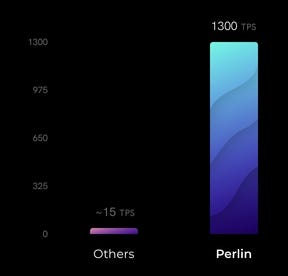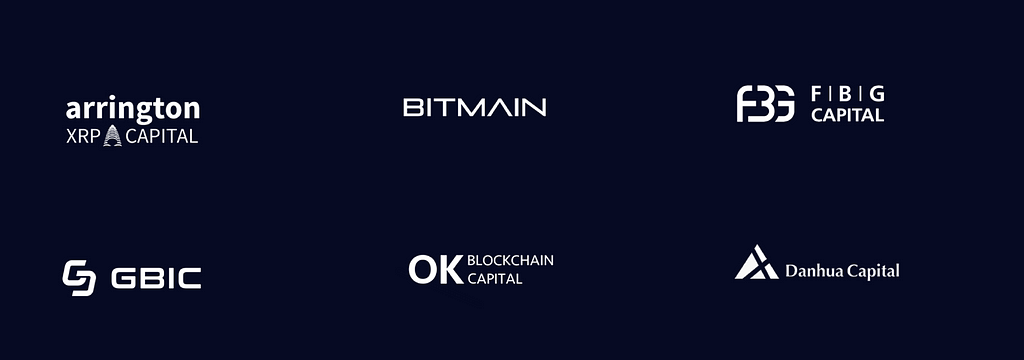Latest news about Bitcoin and all cryptocurrencies. Your daily crypto news habit.
Perlin Network is a DAG based distributed ledger built on top of the Avalanche consensus protocol. The first application of Perlin is a decentralized compute layer that provides computing resources to anyone in need of computational power.
In this article, we will forget all the FUD surrounding the project and break down Perlin to better explain the tech and team behind it.
 Perlin — a bleeding-fast ledger with a powerful compute layer.
Perlin — a bleeding-fast ledger with a powerful compute layer.
Why Perlin
Current blockchain solutions such as Bitcoin, Ethereum, Monero etc have been unable to scale to the current demand and this poses a big threat to the mass adoption of crypto.
To add to this, the consensus protocols used by most of these currencies have many negative effects. For example, Proof of Work which is widely used by Bitcoin wastes high amount of electricity to carry out the complex computations in order to reach consensus. On the other hand, Ethereum is planning to move to Proof of Stake which even though energy-efficient, is prone to Denial of Service attacks.
This calls for other solutions which can offer a better and efficient consensus protocol.
Also, the other major problem that is faced by many startups, researchers, small enterprises is the lack of compute power at a lower cost. Many key players in various industries do not have access to computational resources required for their projects or researches. This can significantly delay many life critical researches such as cures for cancer. Also, with the traditional cloud computing, advancements in research and technology would be available only to the ones wealthy enough to afford it.
What is Perlin?
Perlin attempts to solve both the consensus and compute problems. It is comprised of two layers
- Distributed Ledger : A high-throughput DAG using Avalanche consensus
- Decentralized cloud computing marketplace : Perlin is the first practical, trustless and decentralized cloud computing marketplace that leverages underutilized compute power in everyday smart-devices to make supercomputing economically viable and accessible globally.
Let’s explore the ledger and marketplace in more detail.
Perlin Ledger
Perlin’s ledger uses the Avalanche consensus protocol which was recently published by Team Rocket. The consensus protocol is designed based on the Gossip protocol.
To understand this in simple terms, lets take the example of spreading a rumor at a workplace. If we pick two random people and dismantle some information to them, they would go and spread this information to few others and these new people with information spread to another few . The cycle continues and in no time all the people in at the workplace know the information.
Avalanche consensus uses the same idea and gets a consensus by picking random sets of nodes to pass information to others and after few recurring voting process, the entire network reaches a point of consensus. This is very fast than traditional consensus mechanisms and does not waste any electricity.
 Directed Acyclic Graph (Credits : Wikipedia)
Directed Acyclic Graph (Credits : Wikipedia)
Also, the ledger maintains a dynamic append-only Directed Acyclic Graph (DAG) of all known transactions. Since DAG is an implementation of Graph data-structure, it allows appending parallel nodes to the ledger. This allows DAG to overcome many limitations of traditional blockchain solutions.
This allows Perlin many advantages of other blockchains
- ~1300 TPS in testnet
- Ability to build dApps on top of Perlin
- Robust and decentralized consensus protocol
Decentralized cloud computing marketplace
 Decentralized cloud computing.
Decentralized cloud computing.
The first application built on top of Perlin is the decentralized cloud computing marketplace. The marketplace offers compute resources that can be used to perform massively parallelized compute work. This marketplace primarily targets startups, small enterprises, researchers, independent developers etc.
The marketplace comprises of three parties
- Miners
Miners supply the compute power by registering their idle computing resources on Perlin network. Miners are paid out in $PERLs based on how long they rent out their compute resources
2. Customers
Customers are the individuals or organizations looking for renting compute power. Once the customers find a match based on their requirement of compute power, they can SSH into miner’s virtual machine and execute their tasks on that machine.
3. Validators
Validators come to consensus and log transactions between miners and customers through the distributed ledger. Validators receive incentives in the form of commission from the transaction fee of the transactions they validate and broadcast.
Other major features
Proof of compute availability : Perlin ensures that the miners prove that they own the computational resources before selling them to the customers. It also uses decentralized clocks on the miner’s machines to calculate the exact time the resource was rented out.
Privacy : Perlin provides customers with SDKs to secure the privacy and security of both computation and data running on the miner’s virtual machine.
Costs : Since the customers are mostly using the commodity smart devices, they would be able to get resources at much cheaper price than the traditional cloud solutions of Google, Microsoft & Amazon.
Performance : Perlin can provide great speed, performance and efficiency by using more machines to perform a task.
Token
PERL (ERC20) token
Price
$0.04 : Seed Sale (Dec, 2017 to Jan, 2018) — 20% of Tokens Issued.$0.12 : Strategic Sale (April, 2018 to May, 2018) — 20% of Tokens Issued$0.20 : Private Sale (June, 2018 to July, 2018) — 7.5% of Tokens Issued.
Details of crowd sale are not announced as of the day of publishing this review.
Team
From the discussions on forums and my personal research, the project seems to be the brainchild of Kenta Iwasaki, a very strong and talented engineer with heavy research background on distributed systems, cryptography, signal processing, mathematics, statistics and machine learning
At this point, its still not clear if all the other engineers are just part-time contributors or are with Perlin full-time.
Investors
Perlin has managed to get the attention and investments from many big investors in the crypto space. These are some of the major investors in Perlin.
Summary
In spite of all the FUD surrounding the project in the last few months around different investment rounds and prices offered to investors, the tech seems very solid.
Avalanche consensus is the first consensus protocol to come out in many many years and Perlin has taken the brave step of believing in it and more importantly using it for their project. This also leaves them at risk of using an untested protocol.
Perlin recently open sourced their decentralized P2P library Noise proving that there is serious development efforts going on behind the scenes.
I am very excited about the project and believe that if the project can deliver on the promises made, it can standout in this already crowded market of decentralized cloud computing.
Please let me what you think about this project.
Follow me on Twitter @maverick_crypto
PS : It is important to hear your feedback. Please comment or clap if you liked this review. Also, drop me an email at sam(at)maverickcrypto.com if you want to talk!
Disclaimer: MaverickCrypto is not a registered investment advisor, broker/dealer, financial analyst, financial bank, securities broker or financial planner. The information is provided for information purposes only. The information is not intended to be and does not constitute financial advice or any other advice, is general in nature and not specific to you.
Please always do your own research before making any investment decisions.
Perlin — Real tech behind all the FUD was originally published in Hacker Noon on Medium, where people are continuing the conversation by highlighting and responding to this story.
Disclaimer
The views and opinions expressed in this article are solely those of the authors and do not reflect the views of Bitcoin Insider. Every investment and trading move involves risk - this is especially true for cryptocurrencies given their volatility. We strongly advise our readers to conduct their own research when making a decision.




